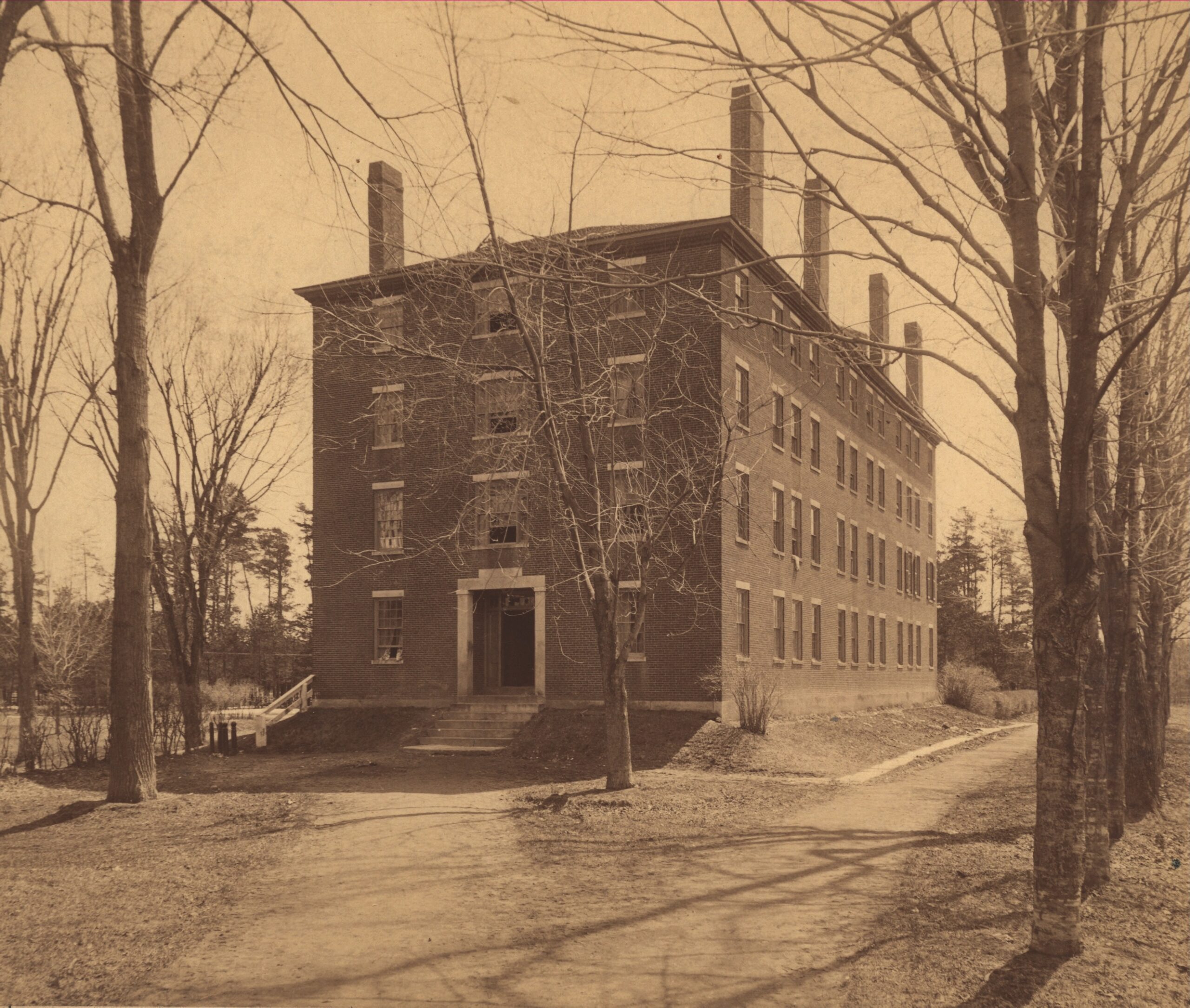What’s in a Name: Appleton Hall
October 11, 2024
 Courtesy of the George J. Mitchell Department of Special Collections and Archives
Courtesy of the George J. Mitchell Department of Special Collections and Archives“All [undergraduates] shall attend morning and evening prayer in the chapel,” Bowdoin College President Jesse Appleton wrote in his 1814 pamphlet, “Laws of Bowdoin College.” Appleton went on to declare, “If any undergraduate arrives after the exercises have begun, he may be fined three cents; Lest he be absent, six cents.”
The words of Bowdoin’s second president, Reverend Jesse Appleton, present a striking picture of the reverend’s religious leadership on campus. Today, Appleton’s legacy lives on in the brick walls of Bowdoin’s third-oldest dorm, Appleton Hall. Yet the building’s namesake reflects a very different picture of Bowdoin’s campus than what it resembles today.
Appleton served as president from 1807 until his death in 1819. He brought a distinct Christian background to his work as president, having served as a priest in New Hampshire for ten years prior to his appointment at the helm of the College.
As president, Appleton often delivered lectures to Bowdoin students on religious topics, stressing the importance of Christianity in a Bowdoin education. The reverend gave almost 50 theological lectures at Bowdoin in total, many of which have been preserved and published.
In 1814, Appleton drafted “Laws of Bowdoin College,” a pamphlet that depicts the extent to which Appleton’s religious convictions drove his leadership at Bowdoin. It is unclear how the rules outlined in the pamphlet were enforced. Still, the guidelines strictly regulated students’ religious practices, requiring all students to attend mass at the Chapel twice a day.
“If at prayers, or immediately before or after in the Chapel,” Appleton wrote, “any undergraduate shall be indecent, irreverent or [exhibit] disorderly conduct, he shall be fined not exceeding one dollar, or be admonished, suspended or [disciplined] according to the aggravation of the offense.”
Appleton carried out his duties as president until 1819, when he is thought to have died of tuberculosis. More than 20 years following his death, Appleton’s legacy was permanently cemented on Bowdoin’s campus with the construction of a new dormitory which came to be known as Appleton Hall. The College contracted the construction of the dormitory for $8,500 in 1842 ($326,300 today), and the building was erected one year later in 1843.
The dorm was named after Appleton four years after its construction, following a brief period during which the building was referred to as South College. However, naming the building in honor of Appleton in 1847 does not mark the final time the dorm has been renamed—at least colloquially.
Today, students in Appleton Hall, like many first years living in the bricks, take their own spin on the building’s name by coming up with off-kilter nicknames for the dorm. For residents, the process of nicknaming the dorm adds a fun and personal flair.
This year’s residents have already chosen several names for the dorm—“Baddieton,” “Freakington” and “Trappleton,” to name a few. Michelle Morales ’28, a first year living in Appleton Hall this year, explained that the process of nicknaming the dorm came naturally for her and fellow residents.
“Me and my friends all found out at the same time that we were [living in] Appleton, so we thought, ‘Oh, and we’re all baddies, so it’s Baddieton,’” Morales said.
Nicknames for Appleton Hall have taken different shapes throughout the years, often reflecting the slang of the day and moments in popular culture. Morales explained that this year is no exception to the trend.
“Being a freak [is] a widespread meme right now—at least for me and my friends. So we just thought, oh, ‘Freakington’ too,” Morales said.
In a departure from the regulated, uptight past reflected in Appleton Hall’s original namesake, the process of nicknaming allows students to develop a connection with the space by their own rules. Despite the nicknames’ quirky, unserious nature, residents noted the significance of getting to call their home a name of their own.
“Nicknames are a fun way to be more intimate with the place, so I think that having these little nicknames for our homes is a cute way of referring to them and making them feel more homey,” Appleton Hall resident Maya Benitez Longo ’28 said.

Comments
Before submitting a comment, please review our comment policy. Some key points from the policy: